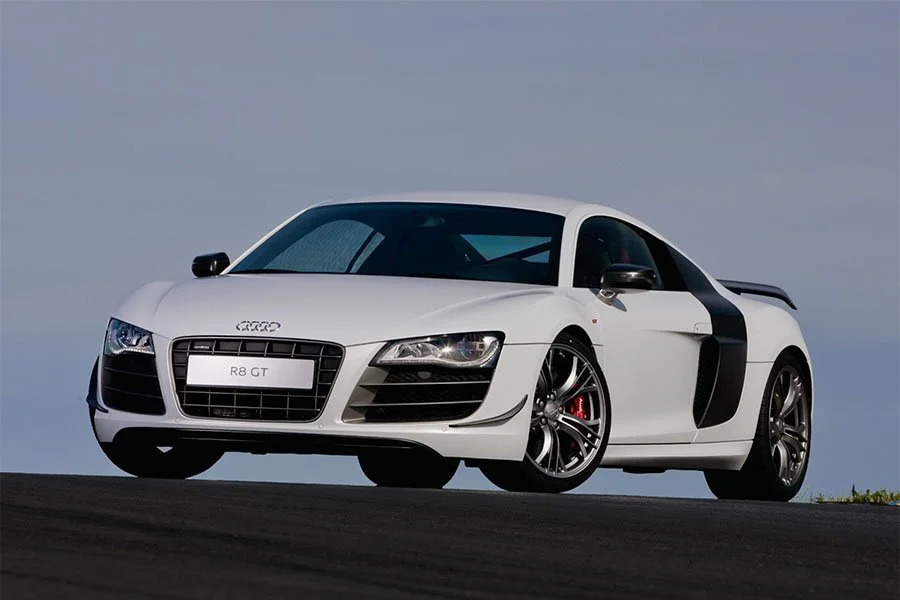Guide: Audi Quattro Spyder - a Historical & Technical Appraisal
/BACKGROUND
By the early 1990s, Audi were faced with the dilemma of how to replace their flagship Quattro.
Since its introduction at the Geneva Motor Show in March 1980, the Quattro had transformed Audi’s image from a builder of utility vehicles to the kind of prestige brand that could rival BMW and Mercedes-Benz.
Thanks to its good looks, competition prowess and unrivalled roadholding, the Quattro had become an icon of its era.
Although Audi had the B4 80-based Quattro S2 in the pipeline, certain management factions wanted to move further upmarket and build a thoroughbred mid-engined sports car.
Accordingly, two quite different concepts were unveiled during the final months of 1991.
First to arrive was the Quattro Spyder.
Presented at the Frankfurt Motor Show in October 1991, the Quattro Spyder was conceived as a sub DM100,000 offering with an off the shelf V6 engine. It boasted full-time four-wheel drive and a lightweight aluminium body complete with removable glass roof panels.
Less than three weeks later, Audi presented a machine from the other end of the spectrum; the W12-engined Avus.
Unlike the Quattro Spyder which was already operational and not far from production-ready, the Avus used a mock up of a future Audi W12 engine and was never seriously considered for production. Instead, this state-of-the-art fantasy was created to showcase Audi’s forthcoming aluminium construction technology.
The all bells and whistles Avus could easily have overshadowed the Quattro Spyder but, despite having been launched in the depths of the early nineties recession, Audi were inundated with orders for their lovely little V6 model.
CHASSIS
Design work had started in July 1990.
The Quattro Spyder was built on a tubular steel spaceframe chassis with a comparatively long 2540mm wheelbase.
Front suspension was by a new double-wishbone arrangement and the rear by coil-sprung struts with additional transverse links.
Ventilated disc brakes were fitted all round along with the latest generation ABS.
For their day, the 18-inch Speedline wheels were massive. They came with a much copied six-spoke design and measured 7-inches wide front and rear.
A 70-litre fuel tank sat above the gearbox at the rear of the engine.
ENGINE / TRANSMISSION
The engine itself was the recently introduced 2.8-litre single overhead camshaft V6 found in the C4 100 model.
Mounted transversely, this 90° V6 displaced 2771cc thanks to a bore and stroke of 82.5mm and 86.4mm respectively. It featured a cast iron block and light alloy head with two valves per cylinder. Hitachi multipoint fuel-injection was employed along with a 10.3:1 compression ratio.
Peak output was 172bhp at 5500rpm and 181lb-ft at 3000rpm.
One of the Quattro Spyder’s drawbacks was that its engine would need to be removed for a major service.
Transmission was via a special five-speed manual gearbox, a Torsen centre-mounted diff that automatically varied the front / rear torque split, and a manual rear differential lock from the four-wheel-drive Golf Syncro.
BODYWORK
The Quattro Spyder’s sleek aluminium body weighed just 140kg which was around 30% less than a comparable steel shell.
Well proportioned and compact, among the car’s most notable features was its lift-out glass roof panels that could be fastened in place above the engine cover.
Slender headlights were mounted underneath clear covers and the large front intake fed the radiator.
Engine cooling ducts were positioned behind rear three-quarter windows that folded neatly underneath the flying buttress sail panels.
The front apron and side sills were painted black while the back of the roof and engine cover were dark grey.
A small boot was added at the rear. The tail, with its short overhang, housed custom lights connected by a reflective strip complete with large four-ringed Audi logo.
INTERIOR
The ultra modern interior set the trend for Audi’s future production cars.
It was stylish, well laid out and featured the kind of aluminium parts (gear lever, pedals and instrument bezels) that would become commonplace over the next decade.
Four white-faced dials were housed in a curvaceous binnacle while the rest of the switchgear was located on a central console that connected the dash to the transmission tunnel.
The heavily bolstered bucket seats were upholstered in dark grey fabric.
WEIGHT / PERFORMANCE
Although the show car was a runner, it was by no means fully developed.
Audi quoted a projected weight of 1100kg, a 0-62mph time of 5.7 seconds and an electronically limited top speed of 155mph.
ABANDONMENT
Despite having been very favourably received (around 3000 pre-orders were reputedly placed), Audi abandoned the project for several reasons.
Firstly, the projected sales price of DM100,00 could not be met.
Secondly, the expected 25,000 unit lifetime production was too small for Audi so a subcontractor like Karmann or Porsche would have to handle assembly.
Thirdly, Audi CEO, Ferdinand Piech (son of Ferry Porsche’s daughter, Louise) was convinced not to offer the model as it would take sales away from Porsche. At the time, Porsche was teetering on the edge of bankruptcy; the idea of a contemporary rival from Audi which was run by a member of the Porsche / Piech family was unthinkable.
Ultimately, only one Quattro Spyder was built. The Fiji Orange car that starred at Frankfurt was subsequently repainted Gomeragruen Pearl for a photo shoot in Arizona (where it appeared alongside the Avus). It was later returned to its original colour scheme.
Audi did go on to release a mid-engined model when the R8 entered production in 2006.
By this time VAG had acquired Lamborghini and the R8 was based on the Gallardo platform.
Text copyright: Supercar Nostalgia
Photo copyright: Audi - https://www.Audi.com
































